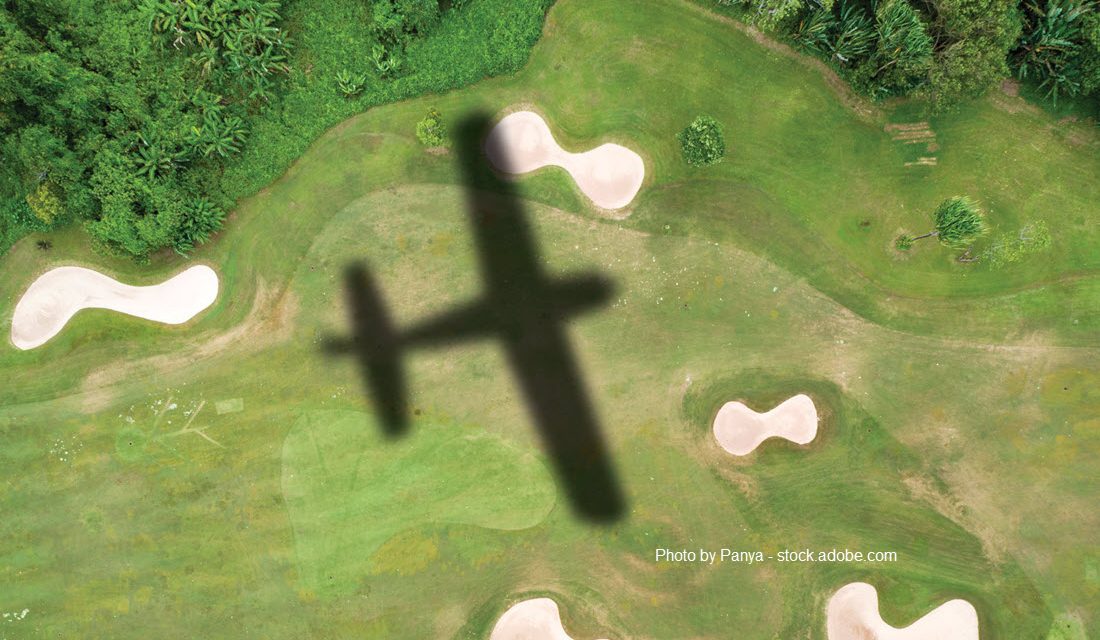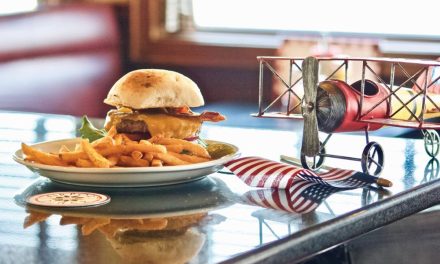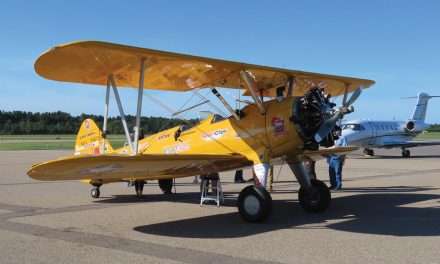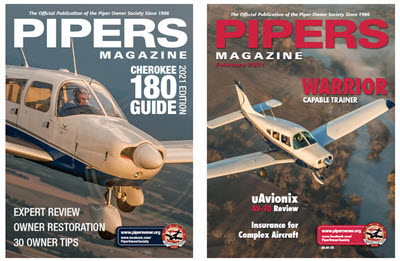By Joel A. Turpin, ATP CFII FAA Master Pilot
The morning sun slipped through the partially open blinds and pierced my eyelids, rousing me from a fitful sleep. After crawling out of bed, I did what most pilots do when they awake; I looked out the window to check the weather. The day dawned sunny and hot with calm winds, a perfect day for flying. Unfortunately, I didn’t have any flights scheduled for this day, May 26, 1972, so I decided to do the next best thing; go to the airport and hang out.
I had spent the past two years working as a flight instructor and charter pilot while attending Southwest Missouri State University in Springfield, Missouri. I was employed by FlightAire, Inc, an FBO and Cessna dealership located at Springfield’s Municipal Airport. I had about 1,300 hours in my logbook, a commercial pilot’s license and a flight instructor rating. In a week, I would add an instrument rating to my resumé. But for a 22-year-old, next week fell into the category of “long range planning.” All that mattered today was being around airports and airplanes, the things I loved most.
A 45-minute drive and a short walk across the sun-baked ramp put me at the entrance door to FlightAire’s operations office. I entered the office, said hello to Jim, the dispatcher, and glanced at the pilot schedule board, but did not see my name. The office was unusually quiet, so I asked the dispatcher about the lack of activity. He said all the charter pilots and instructors were either out flying or at home, which left me as the only FlightAire pilot on the premises. While contemplating the possibilities of this situation, my friend, Steve Schwenk, walked in the door.
I was happy to see Steve as we were more than casual friends. We had gone to high school together in St. Louis and I had been his instructor for his private and commercial licenses. He was also attending SMSU and was a member of the college flying team I had coached for a while. Steve was highly esteemed for his flying skills, especially by me, his former instructor.
Since there was no action in the office, I suggested we head out to the flight line to judge a few landings. As we were standing on the ramp watching airplanes land, I heard my name called on the PA with instructions to report to the office. I was either in luck, or in trouble. Since it was usually the latter, I was in no hurry to respond. After discussing what I could possibly have done to warrant the summons, Steve and I sauntered into the office to see what hand fate had dealt.
An Impromptu Assignment
To my surprise, instead of a lecture in the chief pilot’s office, I was asked if I could possibly fly a charter in the company’s Cessna 210. This was an assignment normally reserved for only the most senior pilots on the roster, the “anointed” few, which didn’t include me.
FlightAire’s 1969 Cessna 210, N3392S, was the hottest airplane I had ever flown. After banging around for over a thousand hours in small trainers, flying an airplane that had a constant speed prop, retractable gear and a 285-hp engine that would go 190 mph was a quantum leap in performance over anything else I had ever flown. And now I was being asked if I could possibly accept the assignment and get paid to fly it?
First, let me check my appointments for the rest of the day… I don’t see anything else… Hand me the keys! At least that’s what my brain was saying. Trying to maintain some semblance of dignity, I accepted the assignment and asked the dispatcher for the details.
“A doctor who is in town for a seminar just called. One of his patients back home had a heart attack and he needs to get to Shelbina, Missouri, as quickly as possible. He’ll be here in about 15 minutes. I’ve got you scheduled in the 210 because of its speed. Time is critical so be ready to go when his cab pulls up.”
We’re Landing Where?
A mere 15 minutes to plot a course, preflight the airplane, check the weather, file a flight plan and, last but not least, find Shelbina, Missouri on the sectional chart? Steve and I had both grown up in Missouri but neither of us had ever heard of the town. Did it even have an airport? We unfolded the chart and found Shelbina in the northeastern part of the state, about 40 miles due west of Hannibal, where I had spent part of my childhood. The AIM stated that Shelbina was served by an 1,800-foot grass strip running north and south with trees at both ends. No fuel or other services were available. There was one, simple word in the remarks: “unattended.” It wasn’t much of an airport, but I felt I could drop the 210 in there with no problem.
We guessed it would be a flight of about an hour and twenty minutes, but before we could even plot a course or file a flight plan, a yellow cab pulled into FlightAire’s parking lot. Ready or not, it was time to go. I invited Steve to go along so he could get some experience in a complex airplane. He accepted my offer and the two of us headed to the flight line where N3392S was parked.
The dispatcher escorted the doctor out to our plane and after some hurried introductions we were taxiing for takeoff on Runway 19. With the run-up complete, Steve got takeoff clearance from the tower and I jockeyed the sleek Cessna onto the centerline and advanced the throttle. The 210 rocketed down the runway and fairly leapt into the air. I retracted the gear, set climb power and requested a departure to the northeast.
Once under way, Steve spread out the sectional chart and plotted a course that would take us to a point just southwest of the Kirksville VOR, and then east to Shelbina. I air filed a VFR flight plan and we settled down to the business of navigating and flying as fast as possible.
At first there was a real sense of urgency, but after talking with the doctor, we learned that his patient’s condition was critical but not life-threatening. With this news, I relaxed and was finally able to savor the pure joy of flying a true high-performance airplane.
About 30 miles southwest of Kirksville, we picked up an easterly heading that would take us directly over Shelbina. Navigating with just a map and four eyes, we finally located the tiny town. Now all we had to do was find an even tinier airport!
After circling the town for a few minutes, I saw a grass field that might have been an airport, except there were no buildings and no parked airplanes. The only structure was nothing more than four poles and a piece of tin pretending to be a roof, just big enough to shelter a J-3 Cub-sized plane. So, was this an airport or a pasture? The mystery was solved when Steve found the windsock.
The doctor had mentioned earlier that he had lived in Shelbina his entire life. I didn’t want to make the embarrassing mistake of landing at the wrong airport so I turned to the good doctor, who was sitting behind me, and posed the question “Is that the airport?” He replied, laconically, “That’s the airport alright, but nobody lands there.”
I was temporarily rendered speechless by such an unexpected and profound reply. My mind was mulling over his answer when I was struck by a profound thought of my own. “Why wouldn’t pilots land airplanes at an airport?” Afraid of offending my only paying passenger, I opted for a more sensitive response.
“Well, if nobody lands there, then, where do they land?”
“Over there, on the golf course,” he said. “They all land on the number one fairway. It’s 440 yards. Nobody lands at the airport. You can park the plane right behind the tee, next to the clubhouse.”
I felt like such a fool! I was the pilot so why didn’t I know this? Maybe it was right there in the AIM and in our haste, Steve and I had missed the statement that said, “Remarks; nobody lands here.”
Dismissing the doctor’s statement, I began to analyze the problem of landing on Runway 36 over trees that stood some 40 feet tall, situated right on the threshold. Making an approach over the tree line would mean touching down about 800 feet from the threshold leaving only about 1,000 feet to stop. My earlier bravado about dropping the 210 in, with no problem, evaporated and was replaced with concern.
The windsock indicated only a light breeze of less than 5 knots out of the north. The lack of headwind combined with a surface temperature above 85 degrees would make the landing sporty. But taking off would be the real problem. There were tall trees at the departure end of a short, grass runway, too. Could a Cessna 210 clear the trees at the far end of the grass runway under those conditions? I didn’t know, but I had my doubts.
With that thought in mind, I casually glanced over at the municipal golf course’s number one fairway. It was about a mile east of the airport and, like the airport, was oriented north and south. If I landed north, over the green, I would have about 1,400 feet before reaching the tee box, with no trees to clear. Taking off to the north would involve clearing trees but they weren’t nearly as tall as at the airport. I also noted that no one was playing the hole. Then it occurred to me that I was contemplating doing what just a few minutes ago was unthinkable; landing on a golf course!
After weighing all the options, I concluded the golf course was the best of two bad choices. With the decision made, I maneuvered the sleek Cessna onto a downwind leg to the number one fairway.
A First Time for Everything
I had never made an off-airport landing, but intuition told me to do everything as close to normal as possible. The first step in keeping things normal was flying a standard left-hand traffic pattern. Steve and I completed the landing checklist, extended flaps to 10 degrees, and lowered the landing gear opposite the “threshold,” which was the green. On base leg, we lowered full flaps and slowed to final approach speed.
Turning final, I scanned the fairway for golfers. There was a foursome playing number 3, but nobody on one or two. Then I started having second thoughts. What if the doctor was wrong and we get arrested? I desperately clung to his words, “Nobody lands at the airport. They all land on the golf course.”
Forcing myself to concentrate on what was still a short field landing, I held the airspeed at 90 mph, lowered full flaps, moved the prop control to high rpm, and checked that the gear was down and locked. I was aiming for a touchdown point just beyond the green. The flag was hanging limp so there would be no headwind to help with stopping. I had played golf many times but never dreamed I would someday use the flag as a wind sock!
We sailed over the green and I closed the throttle. My heart was racing! I flared for landing and our wheels lightly brushed the smooth grass surface of the #1 fairway. As I lowered the nose wheel, I felt a surge of euphoria. We had done it! Landed on a golf course! When I slowed to taxi speed and steered towards the number one tee, the thrill of the landing quickly faded into doubts. What would happen when we parked next to the clubhouse? Would someone call the FAA? Would I lose my license? Why did I do such a thing?
The doctor said we should park behind the tee, but taxiing between the clubhouse and the tee would be a tight squeeze so I did a 180 and parked in front of the tee. Just after I shut the engine down, a man emerged from the clubhouse and started walking briskly towards us. My heart was in my throat! I knew I shouldn’t have listened to the doctor! How will I ever explain this to my boss? I mean, landing on a golf course in the company plane?? There is no explanation!
He reached the airplane and rather aggressively rapped on my side window. With trembling hands, I opened the window, fearing the worst. Then he spoke. “You’ll have to push your plane behind the tee. I’ve got a foursome due here any minute.” Obviously, having an airplane land on the fairway and park next to the clubhouse really was an everyday event. Nobody lands at the airport. They all land on the golf course. I knew that!
Steve and I pushed the 210 behind the tee and parked it in the shade of a large tree, then took shelter in the air-conditioned comfort of the clubhouse. A few minutes later, a car showed up to take the doc to the hospital. We made arrangements for a late afternoon departure and he was then whisked away with an air of officialdom.
The feelings of foolishness I had experienced earlier were quickly fading. After all, I hadn’t made the silly “you’re obviously not from around here” mistake of landing at the town’s airport.
Making the Most of a Strange Situation
After standing around the clubhouse for an hour or so, Steve suggested we rent some clubs and head out on the course. Steve was a top-notch golfer who had played on our high school golf team. His skills were not in question. My skills, however, hovered somewhere between abysmal and criminal. After playing the front nine, I had left a wake of divots that formed a trail of destruction from just off the first tee to where we presently stood.
I was just getting ready to hack another chunk of grass out from under my ball when the greens keeper pulled up on a golf cart to take us back to the clubhouse. He said the doctor was waiting for us there. I watched as his eyes surveyed his once pristine fairway. I knew he was asking himself the question all greens keepers must ask from time to time: “Was this golf…. or vandalism?” With my skills, it was always a fine line.
Twenty minutes later we were taxiing south for takeoff to the north on the number one fairway, but things had changed dramatically. It was now late afternoon and there were golfers everywhere! In fact, a foursome was playing number one, our departure fairway. As I taxied, my thoughts were focused on technical matters such as what flap setting I should use and how much runway was available. The foursome had been standing in the middle of the fairway but moved off to the left side when they saw our plane approaching.
As we got closer to them, I could tell by their demeanor that they were slightly annoyed at the airplane that was interrupting their game. One man had a particularly disdainful look on his face. Then I realized his eyes weren’t focused on us, but on something in the fairway. As I scanned ahead, I finally saw what he was staring at, but it was too late. His ball was lying directly in my path!
A second or two later, my left main gear tire ran over his ball. The ground was very hard from a lack of rain so the ball could not be pushed into the turf. Instead, the tire pinched the ball and it literally shot away and landed about 10 feet off the fairway, and in the rough. The man put his hands on his hips, and his face flushed with anger.
I had run over his ball. I felt terrible about it, but there wasn’t anything I could do. Maybe he didn’t know how to score a ball that landed in the rough because of an airplane. He must have been an amateur since experienced golfers all know that when airplanes do this, the golfer is entitled to a free drop.
When we reached the end of the fairway, I turned into position for takeoff. As I lowered the flaps, I looked at the trees some 1400 feet away and realized we might not clear them with such a short takeoff run. There was only one option; I turned the plane around and taxied about 500 feet up the number two fairway. The extra distance removed any doubt about clearing the trees but created a new problem. Now there was a 30-degree dogleg turn to the right in the “runway.”
I had never taken off on a runway with a dogleg in it! How would I turn the airplane when the time came? There was only one way this could be done. I would have to skid the airplane to the right with the rudder, something I had never done before. I reasoned that since we were on grass, the tires would slide allowing the fuselage to pivot. In theory it sounded good, but would it work? We would soon find out!
As we ran the engine up to check the magnetos, I could feel the stare of what seemed like a hundred angry eyes upon us. Maybe they’d heard about the “landscaping” job I had done earlier on their fairways, or the ball that had somehow ended up in the rough. I didn’t know what it was. But like the guest at a party who had just spilled red wine on the host’s white carpet, we were no longer welcome on the Shelbina Municipal Golf Course. It was time to go!
With the brakes applied, I ran the engine up to full power then released the brakes. We began accelerating rapidly, reaching the dogleg at about 65 mph. I shoved the right rudder pedal forward and the 210 skidded clumsily to the right, but we were now perfectly aligned with the number one fairway. At 90 mph, we lifted off and thundered past the clubhouse, and over the trees. Using the extra 500 feet and the dogleg had paid a handsome safety dividend. You really can skid an airplane during takeoff but, like being able to start an airplane with a rope, it’s not something I usually admit knowing.
It was an uneventful flight back to Springfield. After landing, we parked the 210 on FlightAire’s ramp and headed into the operations office. While handing the keys and clipboard to the dispatcher, Steve and I did our best to look innocent, even though we probably had GUILTY written all over our faces. Eye contact was definitely out of the question. After all of the post flight activities were finished, we fled the scene before the dispatcher could ask any uncomfortable questions.
About 10 years after the Shelbina episode, I was paging through FAR Part 135 and came across a paragraph that was not there in 1972, one that seemed to be aimed directly at me. It said, in so many words, that landings were to be made only on an approved airport. Off airport landings were now specifically prohibited under Part 135.
Most pilots would ask themselves “Why would the FAA feel the need to tell us we have to land on an airport? Isn’t that where you are supposed to land an airplane?” Maybe….just maybe…the FAA had heard from an angry golfer that at Shelbina, Missouri, “Nobody lands at the airport…”
The Death of N3392S
On August 29, 1975, the Cessna 210 I flew in this story, N3392S, was destroyed when it was involved in a fatal accident at Summit, South Dakota. While flying at low level on a telephone cable inspection flight, the pilot unexpectedly flew into IFR weather. Even though he held an instrument rating, the pilot experienced vertigo and spun into the ground, destroying N3392S and killing its pilot. It was a sad and tragic end for the pilot and the airplane. That plane still holds a special place in my memory.
Steve Schwenk
A flight instructor’s most cherished reward is the success of his or her students. In the case of Steve Schwenk, he proved to be the greatest reward in my entire career as a flight instructor. Steve went on to a long career as an airline pilot retiring as a Boeing 747 Captain for Delta Airlines.






